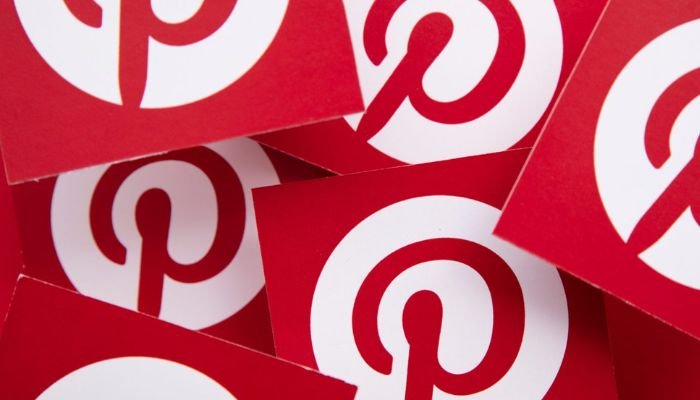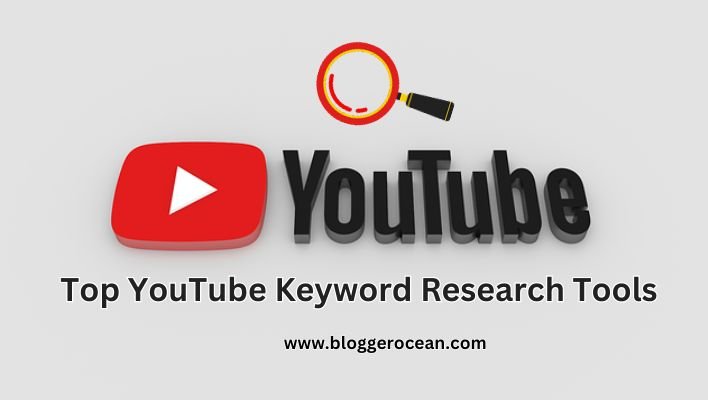Best New Social Media Sites to Promote Your Blog in 2023
What Are Social Media Sites?
In the age of digital connectivity, social media sites have become a ubiquitous part of our daily lives. They have transformed the way we communicate, share information, and connect with others. But what exactly are social media sites, and how do they work? In this blog post, we’ll explore the best new social media sites where you can promote your blog post.
This list of social media sites is hand-picked by us to save your research time and give you a faster insight to start working right away.
Understanding Social Media Sites
Definition: At its core, a social media site, also known as a social networking site or platform, is an online platform that allows users to create profiles, share content, connect with other users, make friends online, and, promote business for free. These platforms facilitate virtual communities where people can connect, exchange ideas, and stay updated on each other’s lives.
Key Features of Social Media Sites
Let’s delve deeper into the key features and components that make up social media sites:
1. User Profiles: When you join a social media site, you create a personal profile. This profile typically includes your name, profile picture, bio, and sometimes additional information like your interests, location, and contact details.
2. Friend/Following System: One of the fundamental aspects of social media is the ability to connect with other users. You can send friend requests, follow other users, or accept incoming requests, forming your network on the platform.
3. News Feed: Social media platforms feature a news feed or timeline where users see updates from the people and pages they follow. This feed contains various types of content, including text posts, photos, videos, links, and more.
4. Interactions: Users can engage with content by liking, commenting on, and sharing posts. These interactions foster communication and engagement within the platform.
5. Messaging: Most social media platforms include messaging features, allowing users to send private messages to one another, either individually or in groups.
6. Content Creation: Users can create and share various types of content, from simple text posts to multimedia content like photos, videos, live streams, and stories.
7. Privacy Settings: To protect their privacy, users can often customize who can see their content and interact with them. This includes options to make profiles public, private, or restricted to certain groups.
8. Hashtags and Trends: Many platforms utilize hashtags to categorize and discover content related to specific topics or trends.
9. Analytics and Insights: Some platforms provide users with data and analytics regarding the performance of their posts, such as the number of views, likes, shares, and comments.
10. Advertising: Social media platforms offer advertising options for businesses and individuals to promote their products, services, or content to a wider audience.
Now let’s move further and see the best social media sites where you can promote your business for free. Here is the list of top social media sites in 2023.
1. Facebook — 3.03 billion Users

According to data from Statista, Facebook stands as the largest social networking platform, with an impressive monthly user base exceeding 3 billion individuals. This remarkable statistic equates to approximately 37 percent of the global population actively participating on Facebook. Beyond the main platform, Facebook’s dedicated messaging application, Facebook Messenger, maintains its own stronghold with 931 million monthly active users.
In the realm of business, Facebook serves as a hub for over 200 million enterprises, predominantly favoring small businesses. Additionally, the platform hosts more than seven million advertisers who actively leverage its capabilities to promote their ventures. Given these numbers, establishing a presence on Facebook emerges as a prudent decision for those seeking to engage with their audience on social media.
What’s more, Facebook boasts a user-friendly environment that welcomes a wide array of content formats. Whether you’re inclined to share text, captivating images, dynamic video content, or ephemeral Stories, Facebook accommodates them all with ease. However, it’s important to note that the Facebook algorithm places a premium on content that triggers conversations and fosters meaningful interactions among users, particularly within the sphere of family and friends. This strategic emphasis ensures that authentic engagement remains at the heart of the Facebook experience.
2. YouTube — 2.5 billion Users

YouTube, a renowned video-sharing platform, plays host to a staggering one billion hours of video content viewed every single day. Notably, it holds the title of being the second-largest social media platform globally, only trailing behind its parent company, Google. Interestingly, it’s also commonly referred to as the second-largest search engine on the internet.
For businesses looking to harness the power of video marketing, integrating YouTube into your strategy is a must. To embark on this journey, let’s dive into the steps for creating a YouTube channel dedicated to your brand.
To enhance the discoverability of your videos and expand your reach, we strongly recommend delving into the intricacies of YouTube SEO. Additionally, you might consider venturing into YouTube advertising to further amplify your content’s reach and impact.
3.WhatsApp — 2 billion Users

WhatsApp, the messaging application, enjoys a vast user base spanning across more than 180 countries. Initially designed for personal communication between individuals and their loved ones, WhatsApp has since evolved into a versatile platform that fosters interactions between people and businesses.
Through WhatsApp’s business platform, enterprises have the opportunity to offer exemplary customer support while keeping their customers informed about their purchases. Small businesses can effectively utilize the WhatsApp Business app, whereas larger enterprises can tap into the extensive capabilities of the WhatsApp Business API.
Given its widespread adoption as the foremost messaging platform, WhatsApp represents an excellent avenue for businesses to deliver top-notch customer service and enhance their customer engagement efforts.
4. Instagram — 2 billion Users

Instagram, being a visual-oriented social networking platform, serves as the ideal stage for spotlighting your products or services through captivating photos and videos. Within this platform’s ecosystem, a diverse array of content types finds a home, including photos, videos, Stories, Reels, and live broadcasts.
For businesses and brands, Instagram offers the option to establish a specialized business profile. This business profile not only furnishes comprehensive analytics pertaining to your profile and posts but also extends the convenience of scheduling posts through third-party tools. Moreover, Instagram doubles as an excellent source for user-generated content, as enthusiastic users routinely share content and tag brands, fostering an engaging and collaborative environment.
5. WeChat — 1.3 billion Users

In 2011, Tencent, one of China’s largest tech conglomerates, introduced WeChat to the digital landscape. Initially conceived as a messaging application, WeChat has since transformed into a comprehensive, multifunctional platform. Beyond its core features of messaging and calling, WeChat offers a broad spectrum of services, including online shopping, bill payments, grocery purchases, money transfers, reservation bookings, taxi hailing, and much more.
WeChat reigns supreme as the most prominent social media platform in China and various other regions across Asia. This becomes especially significant if you seek to elevate your brand’s presence in China, where renowned social networks like Facebook and others are inaccessible. WeChat stands as a viable alternative, providing avenues for brand promotion through official WeChat accounts and WeChat Moments advertising. Additionally, the platform boasts a plethora of WeChat-based influencers, facilitating the reach of your brand to millions of Chinese consumers.
6. TikTok — 1.05 billion Users

TikTok, known as Douyin in China, is a dynamic short-form video-sharing application. Despite its relatively recent launch in 2017, TikTok has skyrocketed to become one of the world’s fastest-growing apps, even surpassing Google in terms of internet site visits.
The platform empowers users to craft and share video content, ranging from 15 to 60 seconds in duration. TikTok offers an extensive library of sound effects, music snippets, and filters that enrich videos, rendering them more engaging and visually appealing.
TikTok’s diverse content landscape caters to a wide spectrum of interests, encompassing activities like lip-sync performances, dance challenges, ingenious DIY demonstrations, and makeup tutorials. Impressively, nearly 47.4 percent of TikTok’s user base in the United States falls within the age group of 10 to 29 years. This demographic composition makes TikTok an exceptional platform for businesses targeting a youthful audience.
7. Telegram — 700 million Users

Telegram, a freely available messaging application, offers seamless communication across multiple devices, with the added advantage of unrestricted media file sizes.
What sets Telegram apart is its robust end-to-end encryption, ensuring the utmost security for all interactions, whether it’s individual chats, group discussions, or the exchange of media among participants. This unwavering commitment to safeguarding user data has garnered Telegram an ever-expanding user base, particularly in light of privacy policy changes by WhatsApp, which raised concerns about data sharing with parent company Meta.
For brands seeking to harness the potential of Telegram, opportunities abound beyond offering one-on-one customer assistance. Brands can, for instance, harness the platform’s capabilities to develop chatbots tailored for Telegram users. Additionally, the channel feature offered by Telegram enables brands to disseminate messages to audiences of up to 200,000 individuals, providing a potent tool for broadcasting updates and engaging with a wide audience.
8. Snapchat — 557 million Users

Snapchat is primarily designed for sharing photos and brief video clips, referred to as “snaps,” among friends. It played a pivotal role in popularizing the vertical video format, a trend that later spread to other social media platforms such as Instagram and TikTok.
Despite its innovative contributions, Snapchat faced formidable competition with the advent of Instagram Stories, which has somewhat impeded Snapchat’s expansion and dampened marketers’ enthusiasm for the platform.
However, it’s worth noting that Snapchat maintains a substantial presence among its core demographic: 69% of American teenagers report using the platform. If your target audience predominantly comprises teenagers, integrating Snapchat into your strategy should certainly be considered.
9. Pinterest — 445 million Users

Pinterest serves as a versatile hub for finding inspiration and unearthing fresh concepts and products. Users on this platform engage in the act of “pinning” photos, which conveniently link to web pages, product listings, blog articles, and various online content sources. This feature makes Pinterest an invaluable tool for driving traffic to your website, with the added advantage that Pinterest’s user community exhibits a remarkable propensity to convert, as they are seven times more inclined to make purchases of products they’ve pinned.
The platform thrives with a vibrant array of popular topics and themes, including fashion, beauty, home improvement, gardening, and do-it-yourself projects. If your business operates within any of these industries, a strategic foray into Pinterest marketing is strongly recommended, providing a potent avenue to elevate your business’s visibility and reach a highly engaged audience.
10. Quora — 300 million Users

Quora stands as a vibrant community-driven platform, both in the form of a website and an app, dedicated to questions and answers spanning a vast array of topics. Within this dynamic ecosystem, user-generated content is evaluated based on metrics such as views, votes, reviews, and shares, effectively ranking questions and answers to ensure the most valuable information rises to the top.
For businesses, there are several avenues to explore on Quora. One option is to establish a dedicated Quora page for your brand. Alternatively, you can engage employee advocates to respond to queries related to your products, services, or industry expertise. Moreover, Quora offers an advertising platform, facilitating the promotion of your business to a highly engaged audience.
Notably, a significant proportion of Quora users, approximately 63%, leverage the platform to research significant online purchases. This makes Quora an exceptionally valuable channel for connecting with customers actively seeking products or services, ensuring your brand is in front of a receptive and engaged audience.







One Comment